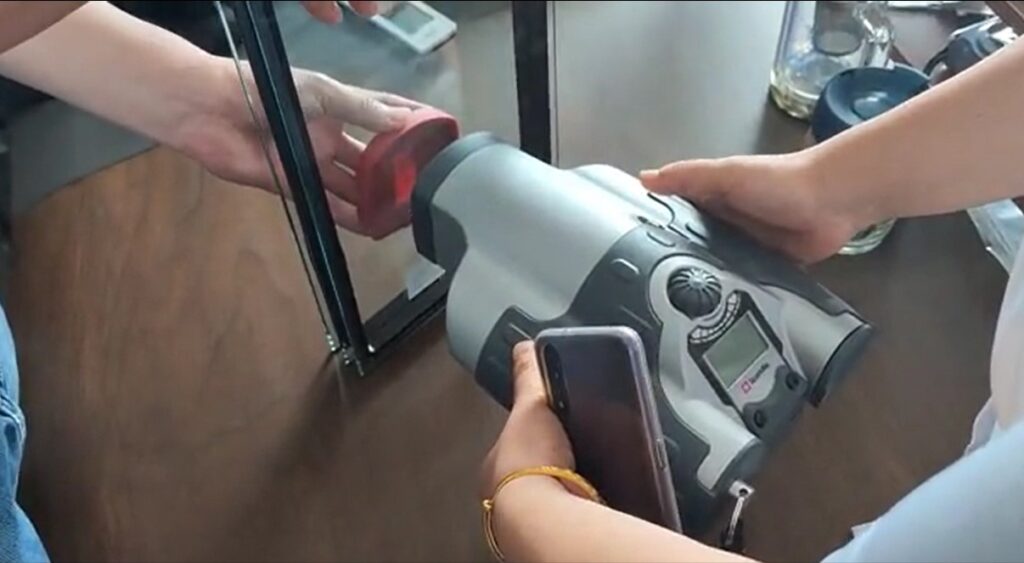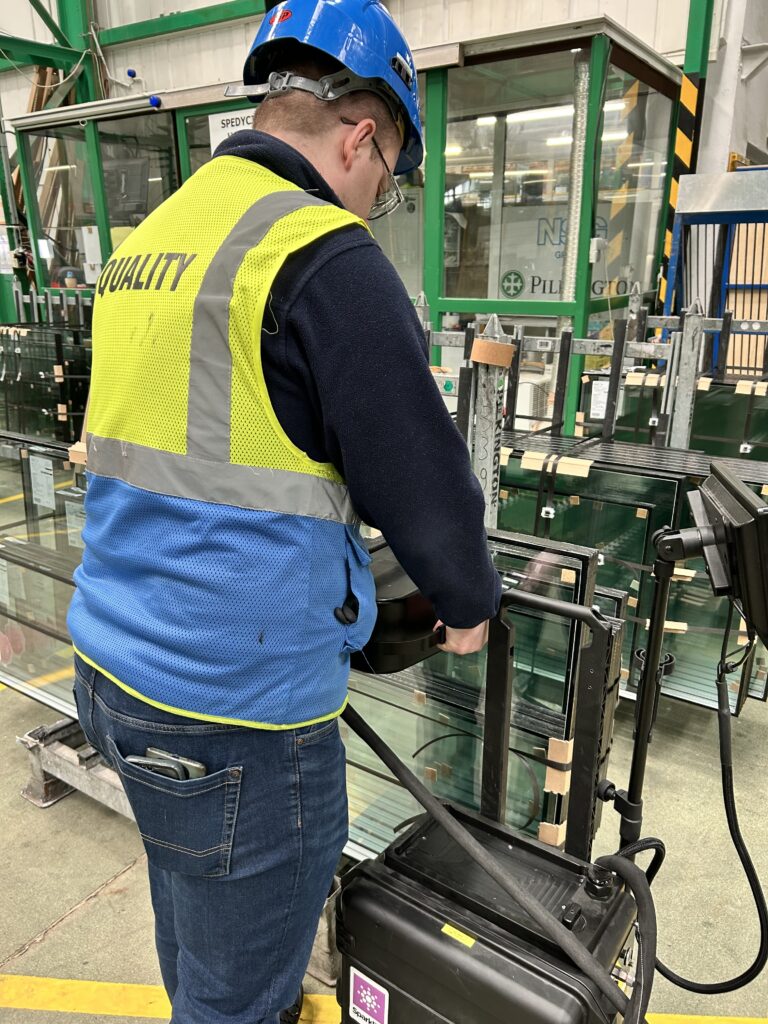In the ever-evolving landscape of energy-efficient building practices, the role of insulating gases in windows has become increasingly significant. To guarantee the effectiveness of these gases, insulating glass standards compliance, such as EN 1279-3 in Europe, are in place to ensure proper measurement and adherence to IGU standards. This article explores the importance of Standards and Regulations for Insulating Glass and Insulating Gas Measurement, emphasizing thermal performance and the significance of gas fill in IGU standards. Read also our articles on Energy Star rating, Chinese Insulating Glass Standard GB/T 11944 and Australian National Construction Code.
The Significance of Insulating Gases:
Insulating gases, such as argon, krypton, and xenon, play a pivotal role in enhancing the energy efficiency of windows. These gases are used to fill the space between glass panes, reducing heat transfer and improving thermal performance. As the demand for energy-efficient building solutions grows, so does the need for reliable and standardized methods to measure and verify the performance of insulating gases.

Gas-Fill Standards Compliance:
American Society for Testing and Materials (ASTM):
ASTM International has developed standards specific to IGUs, such as E2649-20. This standard outlines procedures for determining the argon and krypton concentrations within sealed IGUs. Compliance with ASTM standards is crucial for manufacturers and builders to meet industry expectations and ensure the efficacy of gas fill, directly impacting thermal performance.
National Fenestration Rating Council (NFRC):
In the United States, the NFRC plays a vital role in establishing IGU standards for windows, doors, and skylights. The NFRC label shows information about the energy-efficiency of windows by providing energy performance ratings in multiple categories. One of the categories is u-value and the label therefore addresses the measurement and verification of gas fills level in IGUs. Adherence to NFRC standards is essential for products seeking NFRC certification and to meet energy code requirements, ensuring Gas-Fill Standards Compliance and optimizing thermal performance.
European Standard EN 1279-3:
For a European perspective, gas-fill standards compliance is achieved through the EN 1279-3 standard “Glass in building – Insulating glass units – Part 3: Long term test method and requirements for gas leakage rate and for gas concentration tolerances”. This European standard outlines the methods for the determination of gas leakage rate and gas concentration of IGUs under standardized conditions. Compliance with EN 1279-3 is essential for manufacturers and practitioners operating in the European market to meet regulatory requirements and ensure the performance of gas fill in IGUs.
International Organization for Standardization (ISO):
The ISO has established Standards Compliance to ensure the accuracy and consistency of insulating gas measurements and gas-fill. ISO/DIS 20492-3 provides guidelines for determining the gas content in Insulating Glass Units (IGUs). Adhering to these standards ensures that measurements are conducted uniformly across the industry, promoting reliability and comparability in thermal performance.
Importance of Gas Fill and Thermal Performance:
- Performance Assurance:
- Strict adherence to standards ensures that insulating gases perform as intended, providing the expected level of thermal insulation and energy efficiency in IGUs.
- Consumer Confidence:
- Compliance with recognized standards enhances consumer confidence in the reliability and effectiveness of gas fill, directly impacting the thermal performance of IGUs and contributing to overall customer satisfaction.
- Regulatory Compliance:
- Many regions have adopted building codes and energy efficiency regulations that reference specific standards for insulating gas measurement. Compliance is essential to meet these regulatory requirements and achieve optimal thermal performance in IGUs.
- Interoperability:
- Standardized measurements about gas fill rate and energy efficiency facilitate interoperability within the industry. Builders, manufacturers, and testing laboratories can confidently rely on consistent measurement methods, ensuring uniform thermal performance in IGUs.
Challenges and Future Developments:
While current standards provide a robust framework, ongoing research and technological advancements may lead to updates in measurement techniques. Ensuring that industry stakeholders stay informed and adapt to these changes will be crucial for maintaining Gas-Fill Standards Compliance and advancing the field of insulating gas technology, ultimately improving the thermal performance of IGUs.
Conclusion:
As the glass and construction industries continue to prioritize energy efficiency, insulating gases in windows play a central role in achieving these goals. Adhering to established standards and regulations for insulating gas measurement, including the European perspective outlined in EN 1279-3, is paramount for ensuring performance, building consumer trust, and meeting regulatory requirements. By embracing and upholding these standards, the industry can contribute to a sustainable and energy-efficient future.
Sparklike devices to measure insulating gas concentration:
- Sparklike Handheld™ – for double glazed insulating glass units
- Sparklike Laser Portable™ – for double and triple glazed insulating glass units with coatings and lamination
- Sparklike Laser Integrated™ insulating gas measurement station integrated to the IG-line – for double and triple glazed insulating glass units with coatings and lamination.
Sparklike is the world’s leading expert for measuring the gas content of insulating glass. If you have any questions for Sparklike, please contact us.





